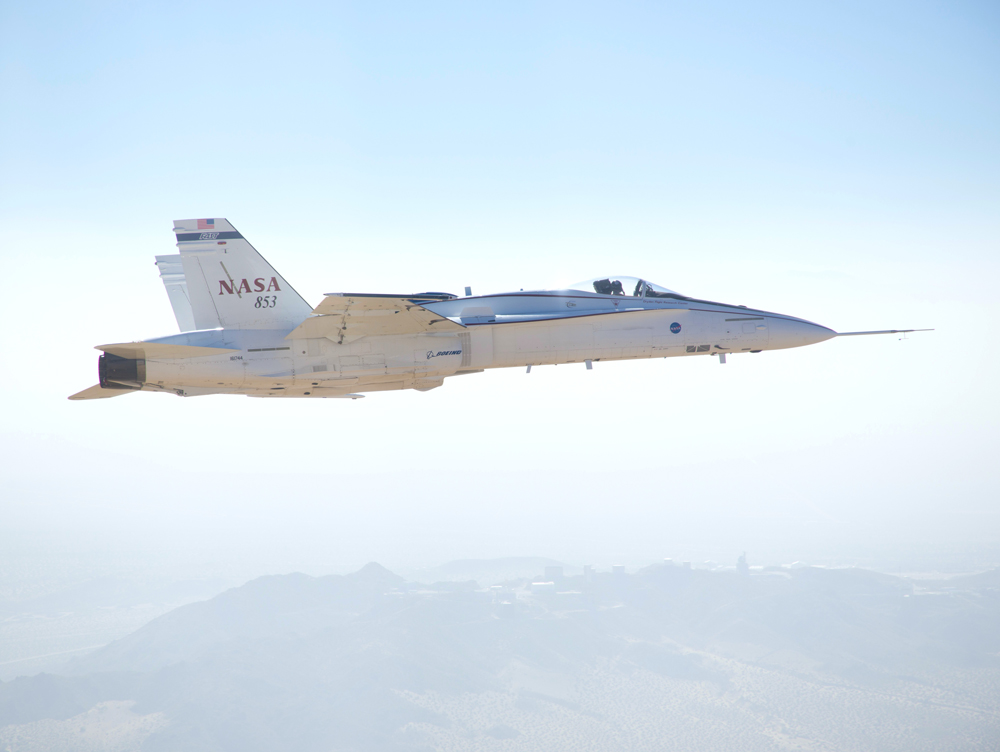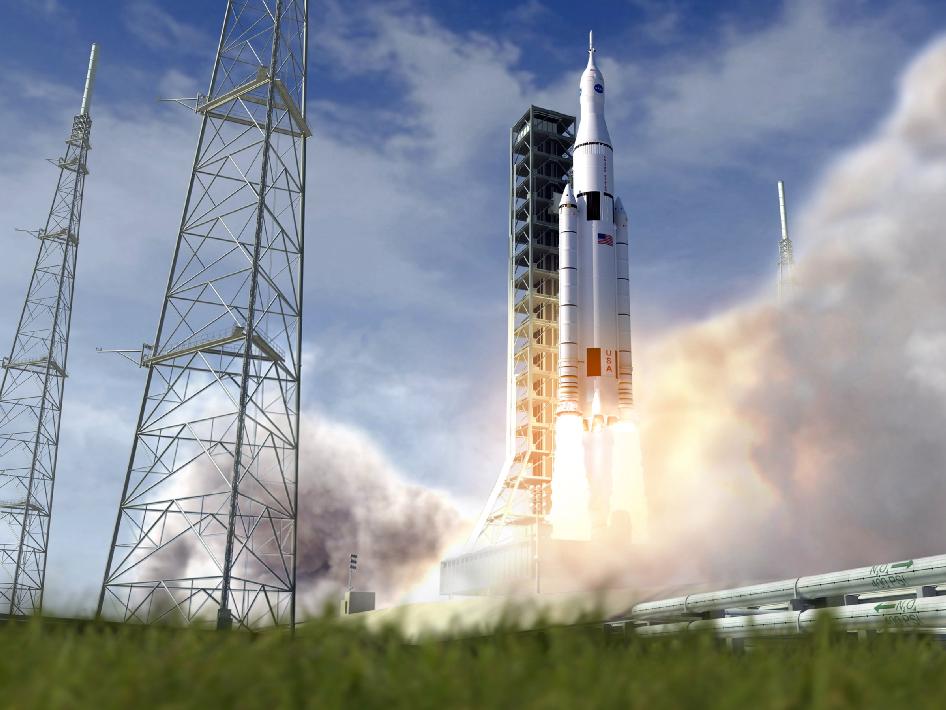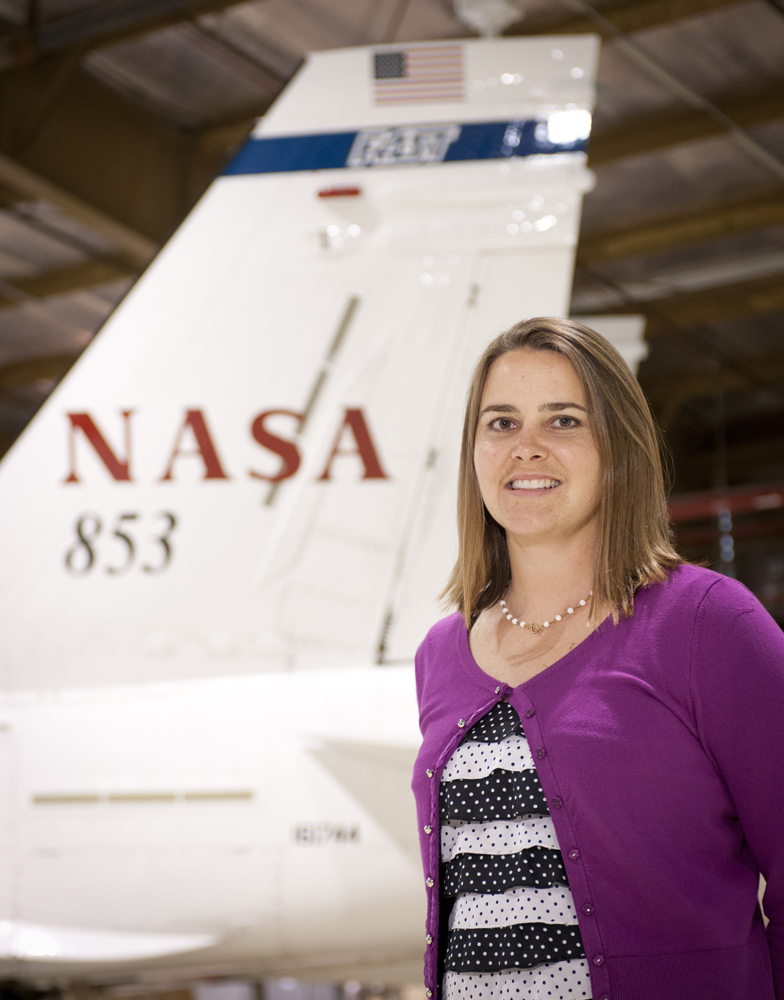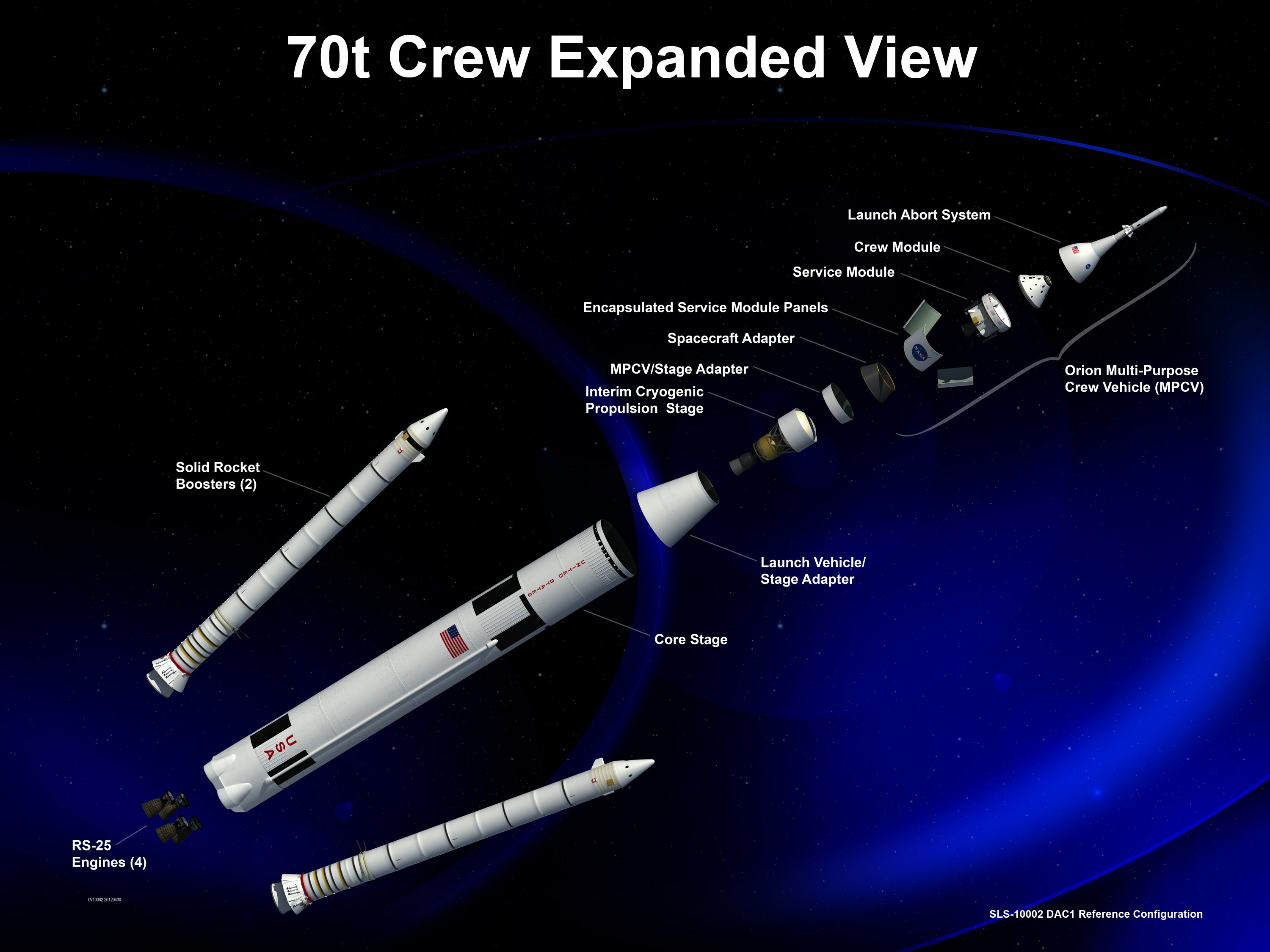
Image Credit: NASA/Dryden
For some time now work has been under way to develop NASA’s replacement launch vehicle for the agency’s retired space shuttle fleet, the Space Launch System (SLS for short). The mammoth rocket will be the most powerful and capable heavy-lift launch vehicle ever designed, and last week a NASA F/A-18 Hornet research jet conducted the first in-flight tests over Dryden Flight Research Center in southern California to evaluate the autonomous flight control system for the SLS.
“By flying a high-performance F/A-18 jet in a manner similar to our rocket, we’re able to simulate SLS’s flight conditions and improve our software,” said Tannen VanZwieten, SLS flight controls working group lead. “The innovative system that we are testing at Dryden is advancing flight control technology by adding an adaptive element which is new for launch vehicles. We’re using this technology to expand the capabilities of the SLS a bit more than what is possible with a traditional design.”

The Launch Vehicle Adaptive Control (LVAC) experiment was conducted in five flights by the F/A-18 Hornet to test the Adaptive Augmenting Controller, which will allow SLS to respond to various conditions—such as winds and vehicle flexing—during the launch/ascent phase of the mission. The NASA Hornet took to the skies over Edwards Air Force Base from Nov. 14-15 to simulate those launch conditions SLS might encounter as it thunders away from Earth. The flight tests are crucial in evaluating the SLS’s flight control system and will help engineers to design a system capable of autonomous adjustments to unexpected conditions as SLS pushes toward space.
“We have 20 test cases, each simulating some abnormal conditions, like higher thrust than anticipated or the presence of wind gusts, to see if the algorithm responds as we designed it to do,” said Eric Gilligan, an engineer at NASA’s Marshall Space Flight Center helping to develop the “brain” for the SLS. “The tests might reveal something we hadn’t thought about in our algorithm, which we can go back and modify as necessary.”
No previous NASA launch vehicle has had the capability to adjust autonomously during actual flight, and the SLS Adaptive Augmenting Controller’s ability to make real-time adjustments to the autopilot should make for enhanced performance and a safer flight (SLS will launch astronauts on the agency’s Orion spacecraft).

The NASA F/A-18 simulated both normal and abnormal flight conditions which the SLS might encounter after liftoff, such as sloshing propellant, and “identified key aircraft vibrational characteristics,” according to NASA. Over 40 tests were conducted, flying trajectories similar to what SLS will perform, and the Adaptive Augmenting Controller system was evaluated in different scenarios for up to 70 seconds at a time, matching the rocket’s dynamics from liftoff to solid rocket booster separation.
“This is an example of how advanced rocket technology can be checked out in flight without having to be launched into space,” said John Carter, project manager for the flight tests at Dryden. “Doing this work on the F/A-18 test bed allows for low-cost, quick-schedule tests that can be repeated many times in order to gain confidence in the advanced controls technology, providing some unique testing advantages for this type of control system validation.”
The data collected during the flight tests of the Adaptive Augmenting Controller system will be used to refine software for the SLS and plans for future F/A-18 flight tests in support of SLS, which will run through the end of the year. The autonomous flight control system, according to NASA, will be ready for the first test flight of the SLS, which is currently scheduled to launch an unmanned Orion spacecraft in 2017. Launching from former shuttle launch pad 39B at the Kennedy Space Center, the SLS will send Orion beyond low-Earth orbit to test the entire integrated system (launcher and spacecraft) as a whole before NASA puts astronauts on top of the mammoth rocket for the next flight.
“The rocket has a set of equations that describe its motion,” said Jeb Orr, an engineer at Marshall’s Spacecraft and Vehicle Systems Department helping to develop the complex step-by-step equations that make an F/A-18 Hornet fly like the SLS. “It’s all just a math operation. When applied to the model of the rocket, it helps us predict the intended performance.”

“We’re expanding the capabilities of SLS a little bit beyond what we’d normally be able to achieve through a traditional analysis process,” Orr said. “With an adaptive algorithm, we can be a little more responsive to anomalies in flight, like unpredictable winds, to ensure the vehicle stays on its trajectory. Our software that’s running on the F/A-18 doesn’t know that it’s flying an F/A-18. It thinks it’s flying SLS.”
The Orion spacecraft itself is making steady progress as well. Workers at the Kennedy Space Center’s Operations and Checkout building are currently preparing to fly Orion on its first mission next fall atop a United Launch Alliance Delta-IV Heavy rocket. That flight, known as Exploration Flight Test 1 (EFT-1), will launch from Space Launch Complex-37B at Cape Canaveral Air Force Station in Florida, sending the unmanned Orion beyond low-Earth orbit to validate its control system and heat shield as it plunges back to Earth at over 20,000 mph. The EFT-1 test flight is a critical step that must be completed prior to Orion’s debut launch aboard the SLS a few years later.




This LVAC experiment sounds interesting. I hope the testing will help eliminate or reduce the effect of POGO, which had been a problem on both Gemini/Titan II and Apollo/Saturn 5 vehicles.